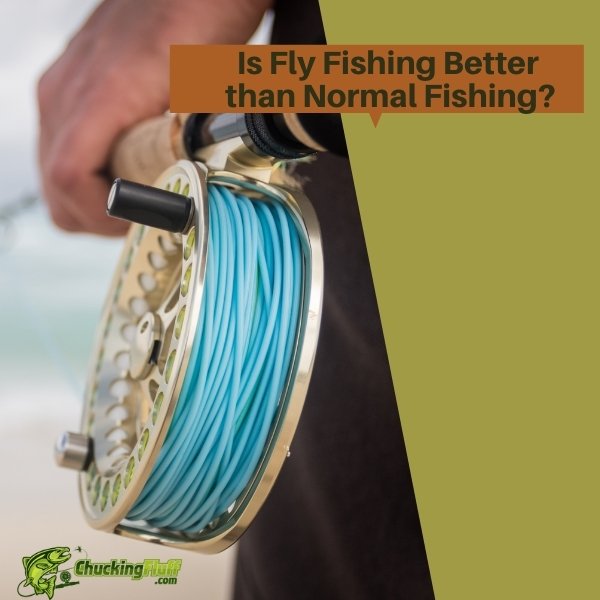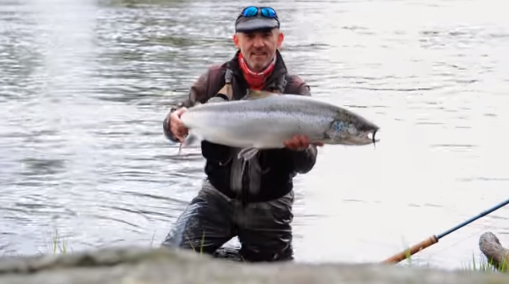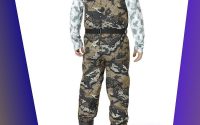| Disclosure: Just to be open and honest the buttons and links you click on in the website will in most cases take you to another website where you can purchase the products I am reviewing. As an Amazon Associate I earn from qualifying purchases. |
Is Fly Fishing Better than Normal Fishing?

Are you a regular fisherman/woman or a fly angler?
One of the most heated debates in sport fishing is fly fishing versus regular fishing.
There are a lot of discussions surrounding the two, and if you have been in the fishing community for a while, you have gotten caught up in one of them.
Most people want to know the better of the two and the benefits from their choices.
Before diving into the differences between the two, let me clear the air: NONE IS BETTER THAN THE OTHER.
Everything boils down to an angler’s perspective.
Regular fishing and fly fishing have their features, pros and cons, and if you know the suitable method to go with at a given time, endless debates shouldn’t confuse you.
What differentiates fly fishing from regular fishing is the use of an artificial fly as bait on a fly rod and reel combo to catch fish which is associated with fly fishing’ more so, weighted lines or fly lines are necessary for presenting unweighted flies to fish.
In contrast, regular fishing needs weightless lines to present weighted objects like lures natural or prepped bait.
It might seem confusing, especially if you haven’t fly-fished before, but it is the way it is!
Quick Post Navigation
The Primary Differences between Regular and Fly Fishing
The primary idea behind fly angling is trying to mimic the type of food fish eats and use your imitation to lure it.
It means that you can make a fish eat your artificial fly and leave other natural foods in its surrounding.
Most anglers fly fish on moving water but sometimes in Stillwater like reservoirs, ponds and lakes.
Regular fishing is like an umbrella consisting of various types like spin fishing, bait fishing and the like.
Regular fishing can be termed as any type of recreational fishing that needs a rod and reel that isn’t a fly rod or reel outfit.
Anglers use live bait and lures in regular fishing, but they don’t cast them like you would a fly in fly angling.
Most regular fishing is done on still water like reservoirs, lakes and ponds, while a few practice it in rivers.
The differences between the two boil down to some critical comparisons, and to understand their differences, we will consider the place, intent, setup, and other factors.
Setup
Fly fishing equipment is very different from what is used in regular fishing, and that is another primary comparison.
The equipment highly influences the technique.
For Rods, fly angling types are long, light and flexible.
Unlike other fishing techniques that allow you to use rod holders as you wait for a bite, you must hold a fly rod in your hand all the time, and as you fish, you are constantly moving around hence the necessity of a light rod.
Regular rods are available in different sizes and shapes.
Popular types are float/match rods, carp rods, spinning rods, and telescopic rods.
An inexperienced fly angler might confuse fly rods with spinning rods because of the slight resemblance, but the former is longer than the latter, although shorter ones exist.
Reels differ across the two types of fishing.
Regular fishing reels are available in various types, but the commonest is spinning and baitcasting reels and come in different sizes expressed in 1000’s.
Fly reels are more straightforward and have a cylinder and two discs lying between them. There is a tiny handle and a drag system within the reel like the one in a spinning reel (these are probably the only similarities between them).
A fly reel accommodates a fly line, and an angler uses their hand to retrieve or remove the line, which is impossible in baitcasting or spinning reels.
When casting any type of regular rod, the fishing line is pulled by the lure’s weight.
Without a lure, or if it is incredibly light, the line won’t ‘fly’ away.
Fly anglers use tiny flies that are almost weightless to catch fish.
The flies can’t pull out the line, so weighted fly lines are mandatory.
The line’s weight makes it fly far away from the rod.
For regular fishing, you need a mainline, a leader (sometimes), and if using a braided line on your reel that isn’t braid ready, you need a mono backer.
Fly lines have backing, the line, a leader and a tippet.
These lines are shorter and thicker than regular lines; longer lines can’t fit onto the reel due to the thickness.
As far as baits are concerned, regular fishing has many artificial and natural options.
Some live bait options are minnows and worms, while artificial lures range from crankbaits to spinners.
If you can, prepare DIY bait such as carp boilies.
Certain fish species prefer bread or corn mixed with tuna oil.
All the above lures and baits have weight as their standard binder, which is enough to pull out the line, especially when using sinkers.
Fly angling lures are smaller flies available in various sizes and shapes.
The trick to using them effectively to catch fish is matching the hatch.
As an angler, you need to familiarize yourself with insect species and their lifecycle to help you choose the correct fly.
Flies like streamers are attractors, and they don’t imitate natural ones.
Some fly anglers are tyers too, and this can be demanding, but the effort is worth it.
Differences in Techniques
Regular fishing has various techniques like trolling, bottom fishing, spinning, jigging and float fishing.
These techniques use different gear and lures.
Fly fishing can only be done using fly fishing gear, equipment and flies.
It is a demanding hobby or sport, especially the casting part.
Here, you’re casting a line and not a lure.
When casting fly rods, there are impulse transfers starting from the rod’s bottom travelling to the tip.
This impulse is what is transferred to your weighted line.
Loops form on the line resulting in this motion.
One of the most typical fly fishing techniques is forward casts applied in standard conditions.
Hook setting in regular fishing requires beginners to pull the rod upwards and set it while this is done parallel to the water’s surface in fly fishing.
The Fish
Regular anglers can catch any game fish they want but use different techniques for different species.
The versatility of the equipment and setup allows for this.
Fly fishing is limiting, and you can only apply it for species that to flies, among them trout, salmon, grayling, pike, carp, bonefish, steelhead and bass.
All fish caught on a fly can be caught by regular anglers, but vice versa isn’t possible.
Place or Type of Water
If you have browsed fly angling videos or images, you must have discovered that most anglers are in fast-flowing crystal rivers and streams or the wilderness.
These are excellent fly fishing conditions, and the technique is primarily practised in flowing water, but some do it in ponds, reservoirs and lakes.
Saltwater species like striped bass and snook can be caught on the fly in the sea.
You can fly fish from the shores banks or wade through water.
Regular fishing is possible in any type of water with fish, and there are few to no laws against locations.
Experience
Fly fishing needs more effort, dedication and time.
If you do it correctly, you will appreciate the incredible bond it gives with nature and the exciting experience.
Regular fishing can match this feeling if you chase wild fish and thoroughly enjoy what you do.
But, regular fishing in a local pond after a long working day can’t compare to fly fishing or adventurous regular angling.
All in all, the best experience is engaging in the type that makes you the happiest and most satisfied.
Costs
Unfortunately, fishing isn’t free.
However, here’s the truth: it doesn’t have to be crazily expensive.
You can buy entry-level rods tackle for regular fishing almost anywhere, and they are pretty affordable.
You can get them under $45 but ensure to get them from a reputable brand and dealer.
If you add a float, line and hooks, the total could get to $100, but combos or outfits cost less than separately buying each gear.
Being more specialized, fly fishing is costlier.
A basic setup can cost $150 or thereabout, but these might not be durable and more versatile.
It would do for a beginner, but you will need to upgrade sooner than you know it.
Invest some more if you are interested in fly angling.
Conclusion
When comparing regular fishing vs fly fishing, you will notice that the common thing binding them is the ability to catch a fish, but the entire catching process and what is used is different.
If you are inclined towards specific fishing areas, the subtle art of presenting a fly using a weighted line, and the experience, you might love fly fishing.
But if you are the YOLO type, regular angling will suit you.
The style of fishing you choose will depend on you and your needs.
Regardless of what you go for, I hope you enjoy it; it makes you happy and makes you feel fulfilled.


